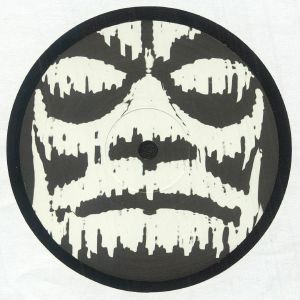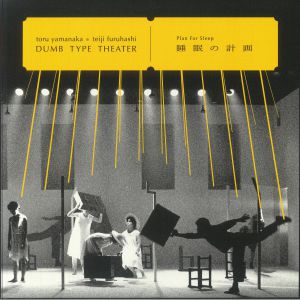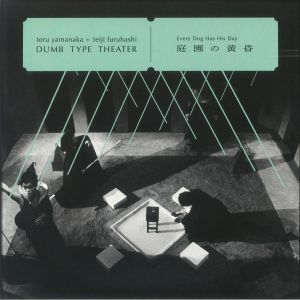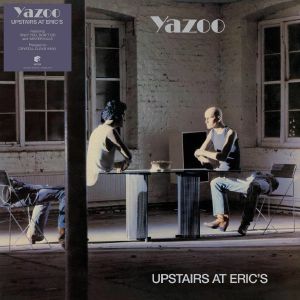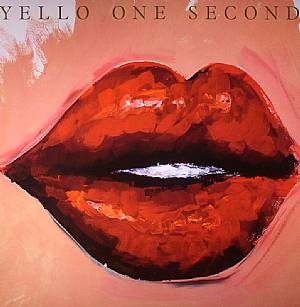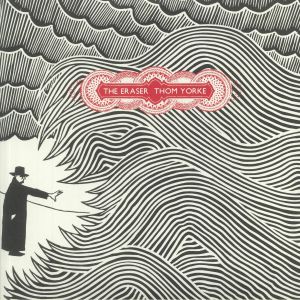Back catalogue: Leftfield
Juno's full catalogue of Leftfield
Singles
Translations Remixes (12")
Cat: 12 TOT 52. Rel: 28 Mar 25
Review: This package of remixes of tunes from Translations is a real gem for lovers of Future Sound of London. plenty of familiar samples and textures are worked into the five Yage remixes as are cosmic overtones, sitars, drones, backward guitars and more. 'The Big Blue' is a woozy intergalactic sound on slow-mo beats, 'Requiem' is a worldly dub, 'The Lovers' has psyched-out lead riffs that bring prog energy and 'The Great Marmalade Mama In The Sky' has drunken tabla drums and mesmeric strings for a perfect retro-future comedown. 'Wooden Ship' is a spine-tingling sound with choral vocals bringing the celestial charm.
… Read more in stock $22.33
Álbumes
Plan For Sleep (remastered) (LP + insert + MP3 download code)
Cat: CONATALA 006. Rel: 03 Dec 24
Review: Dumb Type Theater have been at the forefront of Japan's performance art landscape since 1984, although the years between then and now have seen some significant changes - culturally and in terms of the group. The death of Teiji Furuhashi, one of the central members, is just one example. A pivotal player in performances, he was often tasked with translating the instrumentation and arrangements of musician Toru Yamanaka into on-stage directions. Removed from that context, Yamanaka and Furuhashi's sounds still work incredibly well. There are aspects of Plan For Sleep that evoke the US avant garde of the time, perhaps reiterating the fact that the late-20th Century saw a closing of distances and a shared vision of where the future was heading among broad communities. Sound art, in the most musical and listenable sense.
… Read more in stock $29.95
Every Dog Has His Day (remastered) (LP + insert + MP3 download code)
Cat: CONATALA 007. Rel: 03 Dec 24
Review: It's not hard to see just how ahead of their time Dumb Type were. And still are. Founded in Kyoto, Japan, in 1984, the artist collective looked to interpret and portray the changes they could see beginning to happen around them in society - specifically the start of the (information) technology age. Presenting work that took a dark and cynical view of the increasing importance and prevalence of equipment and digital in the every day, they do this though art exhibitions, performances and publications. Audiovisual installations have always been particularly prominent, and Every Dog Has His Day - one of two Dumb Theater albums previously only available on tape, now issued on vinyl for the first time - makes it clear music was never an afterthought. Credited to Toru Yamanaka, who wrote much of their heard work, and the late Teiji Furuhashi, who translated that onto stage, it's an avant garde essential.
… Read more in stock $25.99
Akira (Soundtrack) (LP)
Cat: V 28021. Rel: 06 Jun 24
Review: Geinoh Yamashirogumi is the performer who brought to life the original soundtrack to the anime classic Akira. The original score was composed by Shoji Yamashiro. The movie is set in in 2019 Neo-Tokyo when the world is still recovering from World War III and teen delinquent Kaneda's biker gang roams the city when his friend Tetsuo is injured and taken to an army hospital. As Tetsuo's uncontrollable powers emerge, a fierce battle ensues between Kaneda, Kei, the army, and Tetsuo. The soundtrack captures the futurist drama with plenty of moving emotions.
… Read moreIntérprete: Juno Recommends Leftfield
in stock $21.76
The English Patient (Soundtrack) (Deluxe Edition) (gatefold 'saharan sun' translucent orange vinyl 2xLP)
Cat: 725579 1. Rel: 26 Mar 25
Review: The music from Michael Ondaatje's Booker Prize and 12-Oscar-winning film encompasses the original score by Gabriel Yared with the haunting vocals of Marta Sebestyen and Fred Astaire. It is a story which has successfully made its mark on every medium that counts a - a classic to beat all classics. It's a cathartic journey that explores identity, fidelity, and fate amid the chaos of World War II. Shot against the majestic backdrop of the Northern Sahara and Italy, Yared's score blends Hungarian folk tunes, baroque themes, and romantic orchestration and mirrors the emotion of the film's characters without relying on visuals. Period tracks by Fred Astaire, Ella Fitzgerald and Benny Goodman complement the emotional depth of the story.
… Read more in stock $41.26
Cat: 964156 151. Rel: 05 Jun 25
Review: Originally released in 1982, Upstairs At Eric's marked the arrival of a duo as timeless as they were era defining, capable of capturing the very essence of an emerging, tech-driven music scene while also writing tracks that still sound incredible today. Many of which have been repurposed, sampled and remixed to the ends of the Earth and we're still not bored. Produced by the two band members, Alison Moyet and Vince Clarke, alongside Daniel Miller, boss of Mute Records, the legendary British label that first carried this, we shouldn't need to namedrop tracks here - Upstairs At Eric's is, frankly, the landmark synth-pop record. Just in case, though, think 'Don't Go', 'Goodbye 70s', and 'Only You'. And that's before we get into the lesser radio-played gems.
… Read more in stock $32.77
One Second (remastered with bonus track) (180 gram audiophile vinyl LP)
Cat: MOVLP 277. Rel: 14 Feb 14
Review: Music On Vinyl are our new best friends. With a wide range of music being reissued as of late, Yello's 1987 One Second is just spoiling us. Never being fully acclaimed when it was originally released, this is one album which really spans the full circle in terms of artistic ideas sonic experimentations. While being tagged primarily as a pop work, it's really more of a lesson in synth manipulations and nutty beat-making. "The Rhythm Divine" has to be out top track but do check the whole thing, it's magnificent...
… Read more in stock $29.95
in stock $26.56
The Eraser
Analyse
The Clock
Black Swan
Skip Divided
Atoms For Peace
And It Rained All Night
Harrowdown Hill
Cymbal Rush
Review: As Radiohead tour the world and then regroup to record their new album, Thom Yorke releases his own record, 'The Eraser' on XL Recordings. A collection of nine new songs, the record was written and played by Thom and was produced by Nigel Godrich. Variously hailed as "The Best Band In The World" (Q Magazine), "Rock's Best Live Band" (Rolling Stone) and the band were placed at number 1 of Spin Magazine's 40 most influential artists, Radiohead has arguably become the most acclaimed and adventurous force in modern music. Over six studio albums the group have proved that it is possible to make massive creative leaps whilst continuing to grow in worldwide stature. Their records set new benchmarks for others to aim towards, whilst their live shows reach levels of intensity and exploration that few can match.
… Read more in stock $30.51
Review: It's not easy trying to pin down Yoshi, the Italian producer. Info is thin on the ground but we do know that parts of A Sunny Place for Shady People are clearly inspired, at least in part, by the legendary Ryuichi Sakamoto and other Japanese digital pop moguls, A Sunny Place is as exploratory and avant garde as it is universal, and steeped in a kind of authenticity that means it could quite possibly have been made at any point since the mid-1980s. A noteworthy achievement and a fantastic, instantly replay-able album.
… Read more in stock $35.04

 USD
USD






